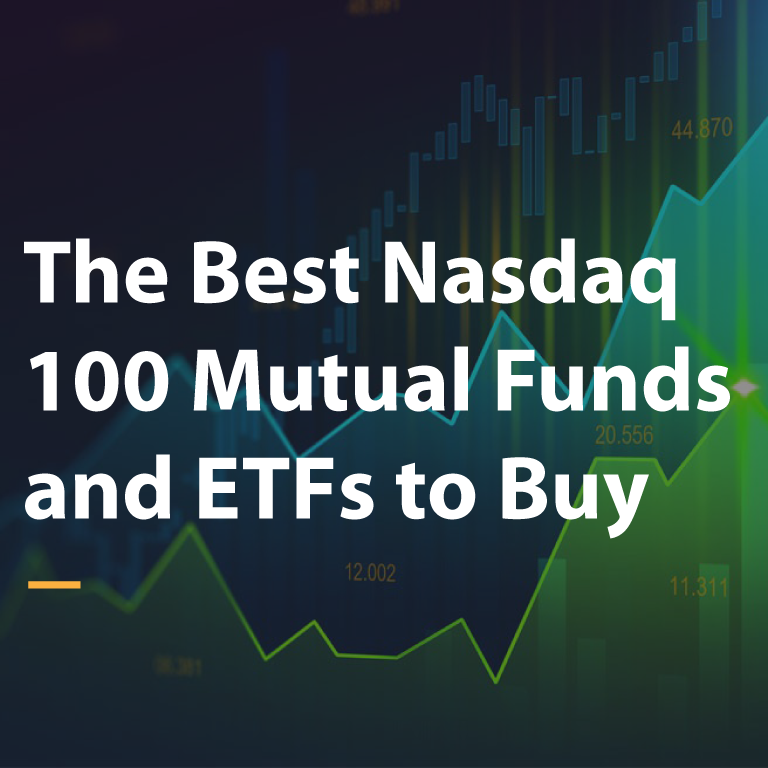In today’s investment landscape, the Nasdaq-100 Index has emerged as a powerhouse, consistently outperforming traditional benchmarks like the Dow Jones Industrial Average and the S&P 500. As investors seek to capitalize on the Nasdaq-100’s success, the market has responded with a plethora of investment options, including ETFs and mutual funds tailored to this high-growth index. In this comprehensive guide, we’ll delve into the best Nasdaq 100 mutual funds available, exploring their features, benefits, and suitability for investors across various risk profiles and investment objectives.
Highlights:
- The Nasdaq-100 Index is outperforming traditional options and offers strong investment potential.
- explore various mutual funds and ETFs that track the Nasdaq-100, catering to different investor goals (cost-efficiency, ESG focus) and risk tolerances.
- Investors can choose the best Nasdaq 100 mutual funds for their needs by considering expense ratios, weighting strategies, and alignment with their values.
Exploring the Best Nasdaq 100 Mutual Funds

Established in 1999, the Invesco QQQ Trust has become synonymous with Nasdaq-100 investing, boasting a remarkable $224.8 billion in assets under management. This ETF provides investors with exposure to top-performing tech stocks like Microsoft, Apple, and Amazon, while also diversifying across sectors such as consumer discretionary and healthcare. With an expense ratio of 0.20%, QQQ offers a cost-effective way to track the Nasdaq-100 Index’s performance.
2. Direxion Nasdaq-100 Equal Weighted Index Shares (QQQE)

For investors seeking a balanced approach to Nasdaq-100 investing, the Direxion Nasdaq-100 Equal Weighted Index Shares offers an intriguing option. With assets under management totaling $1.1 billion, QQQE invests in an equal-weighted version of the Nasdaq-100, mitigating single-stock risk and promoting portfolio diversification. This quarterly rebalancing ensures each of the 100 stocks holds equal weight, providing a unique investment strategy.
3. Invesco Nasdaq 100 ETF (QQQM)

Launched in October 2020, the Invesco Nasdaq 100 ETF provides investors with a cost-effective alternative to the popular QQQ. With assets under management reaching $18.1 billion, QQM offers similar exposure to the Nasdaq-100 at a lower expense ratio of 0.15%. This ETF appeals to investors looking to minimize costs while maintaining exposure to high-growth tech stocks and other Nasdaq-100 constituents.
4. USAA Nasdaq-100 Index Fund (USNQX)

Managed by Victory Capital Management, the USAA Nasdaq-100 Index Fund offers investors a compelling choice for index fund exposure to the Nasdaq-100. With $5.6 billion in assets under management, USNQX ranks among the top performers in its category, boasting a track record of consistent long-term returns. Despite its expense ratio of 0.45%, this fund remains competitive, providing investors with access to top-performing tech stocks and other Nasdaq-100 constituents.
5. Invesco ESG Nasdaq 100 ETF (QQMG)

As environmental, social, and governance (ESG) investing gains traction, the Invesco ESG Nasdaq 100 ETF offers a socially responsible approach to Nasdaq-100 investing. With assets under management totaling $27.1 million, QQMG screens Nasdaq-100 stocks based on ESG criteria, excluding companies involved in controversial industries such as oil & gas and tobacco. This ETF appeals to investors seeking to align their investments with their values while maintaining exposure to high-growth tech stocks.
6. Invesco Nasdaq 100 Index Fund (IVNQX)

Designed for retirement accounts and institutional investors, the Invesco Nasdaq 100 Index Fund provides mutual fund exposure to the Nasdaq-100. With $12.5 million in assets under management and an expense ratio of 0.29%, IVNQX caters to long-term investors seeking Nasdaq-100 exposure in retirement portfolios. While not accessible through traditional brokerage accounts, this fund serves as an option for institutional investors and retirement plan participants.
7. Invesco Nasdaq Next Gen/Future Gen ETFs

In addition to traditional Nasdaq-100 ETFs, Invesco offers a range of ETFs closely related to the index, including the Nasdaq Next Gen 100 ETF (QQQJ) and the ESG NASDAQ Next Gen 100 ETF (QQJG). These funds track the next 100 largest stocks after the Nasdaq-100, providing investors with additional opportunities for growth. With assets under management totaling $664 million and $27.1 million respectively, QQQJ and QQJG offer diverse options for investors seeking exposure to high-growth stocks beyond the Nasdaq-100.
8. ProShares Inverse and Leveraged Nasdaq-100 ETFs

For investors interested in leveraging or hedging against the Nasdaq-100, ProShares offers a suite of inverse and leveraged ETFs. With expense ratios of 0.95%, these products provide daily inverse or amplified exposure to the index, catering to traders and sophisticated investors. While leveraged ETFs offer the potential for enhanced returns, they also entail higher risk and are best suited for experienced investors with a high tolerance for volatility.
Conclusion
As investors seek opportunities in the Best Nasdaq 100 Mutual Funds and ETFs, the landscape of available mutual funds and ETFs continues to evolve. Whether investors prioritize cost-effectiveness, ESG criteria, or specific investment strategies, there are Nasdaq-100 funds to meet a variety of needs. By exploring the best Nasdaq 100 mutual funds, investors can make informed decisions to align with their financial goals and risk preferences, unlocking the potential for long-term growth and portfolio diversification in today’s dynamic market environment.








